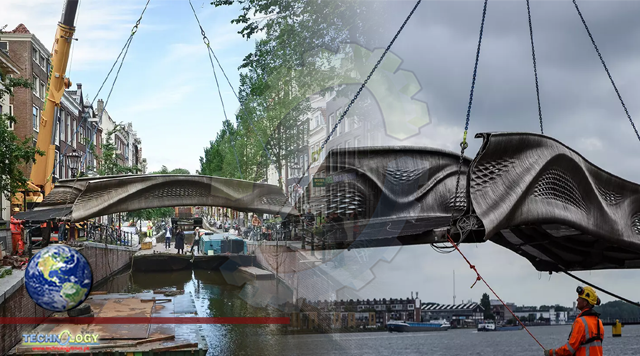Earlier this month, engineers installed the world’s first 3D-printed steel bridge, over the Oudezijds Achterburgwal canal in Amsterdam’s Red Light District.

By Dale Smith
If you thought 3D-printed scooters were cool, wait till you see where you can take them if you happen to be in Amsterdam. Earlier this month, engineers installed the world’s first 3D-printed steel bridge, over the Oudezijds Achterburgwal canal in Amsterdam’s Red Light District.
After being dedicated by Queen Maxima of the Netherlands, the bridge is now open to pedestrians and cyclists (and, presumably, scooterists), according to a report from the Imperial College of London.
Physical construction of the bridge took four giant, torch-wielding robots six months to complete, layer by painstaking layer, using a net total of 4.9 tons of steel. However, before that process began, scientists at Dutch company MX3D spent four years on preliminary research and development to make sure the finished product would be sound.
To ensure that soundness continues, the bridge is infused with a myriad of sensors detecting stress, movement, vibration and temperature. Data collected from all those sensors is relayed to a digital twin of the bridge — a virtual bridge simulated on a computer — which will help scientists monitor the structure.
Once the territory of tech-savvy hobbyists, 3D-printing has found a wide variety of industrial applications in recent years. In 2020, a California company developed a process for 3D-printing 350-square-foot homes in less than 24 hours. And throughout the pandemic, 3D printing was investigated as a way to fill the gaps left from shortages of medical supplies.
Originally published at Cnet